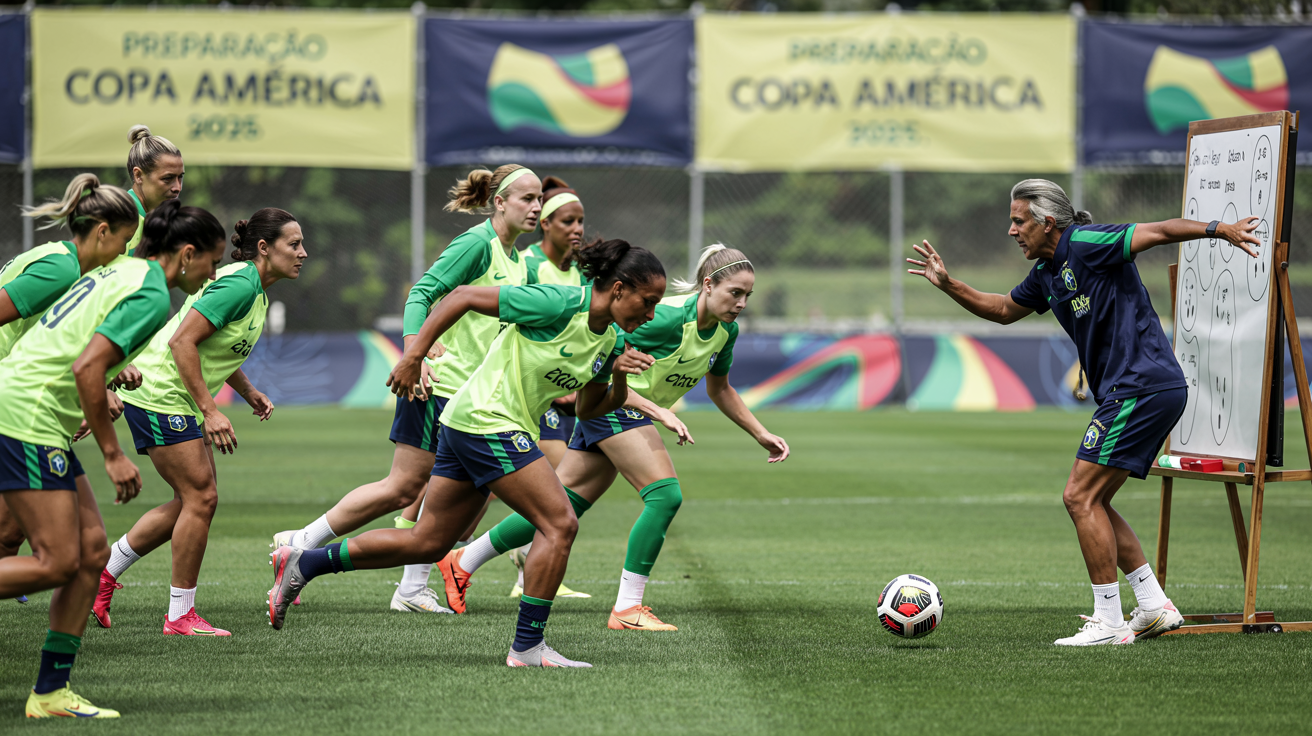The Brazilian women’s national football team has officially begun its first training cycle for the 2025 Copa América, with a renewed focus on youth development, tactical versatility, and long-term Olympic planning. Under the guidance of head coach Arthur Elias, the team is undergoing a strategic refresh following its quarterfinal exit at the Paris 2024 Olympic Games.
The preparation phase began with a training camp in Teresópolis, featuring both veterans and a wave of new talent from the domestic league and European clubs. The message from the Brazilian Football Confederation (CBF) is clear: the future is now.
New Faces, New Philosophy
The current training squad features several debutants, including:
- Aline Gomes (17) – Forward from Ferroviária, top scorer in the U-20 Copa Libertadores.
- Lauren Leal (20) – Defender playing for Madrid CFF, praised for her composure and aerial ability.
- Yasmin de Andrade (19) – Central midfielder from Corinthians with a reputation for ball control and vision.
These players are part of a broader strategy to integrate youth earlier into the senior national team structure — a shift from the traditional focus on experience and physical maturity.
Coach Arthur Elias emphasized during a press briefing:
“We need to think beyond the next tournament. Our goal is to build a flexible, fearless team that can dominate for the next decade, not just win in the short term.”
Tactical Adjustments and Formation Experiments
The team’s sessions have focused heavily on positional play, quick transitions, and varied formations. For the first time in years, Brazil is testing a 3-5-2 system alongside its traditional 4-3-3, giving wingbacks more freedom and encouraging central overloads.
The new tactical approach is influenced by modern trends seen in top women’s teams like England, Spain, and the U.S., and aims to make Brazil less predictable and more adaptable against high-level opponents.
Analysts have noted the increased emphasis on possession under pressure, a key area where Brazil struggled in previous tournaments against pressing teams.
Veteran Leadership Still Central
While youth is a priority, seasoned players remain integral to the project. Tamires, Andressa Alves, and Rafaelle Souza are participating in the camp, providing leadership on and off the pitch.
These veterans have welcomed the transition, seeing themselves as mentors. In a recent interview, Rafaelle said:
“We’re not just here to play — we’re here to pass on everything we’ve learned. That’s how you build a real legacy.”
Eye on Copa América and World Cup Qualifiers
The 2025 Copa América, set to be hosted in Colombia, will serve as a qualifier for the 2027 FIFA Women’s World Cup, making it a vital tournament for Brazil’s competitive future.
Brazil has dominated past editions, winning 8 out of 9 tournaments, but recent growth in countries like Colombia, Argentina, and Chile means the margin for error is shrinking.
The next few friendlies will serve as proving grounds for new players and tactics. The CBF has confirmed upcoming matches against Sweden and Japan, two technically disciplined teams that will challenge Brazil’s progress.
Public Support and Visibility Growing
Following a strong fan turnout at the Paris Olympics, public interest in the women’s national team has reached new heights. The CBF has announced plans to broadcast all friendly matches on free-to-air television and via digital platforms, a first in Brazilian women’s football history.
Merchandise sales for the women’s kit also reached record levels in the last quarter of 2024, and a new documentary series is being developed in partnership with Globoplay, chronicling the team’s journey from 2024 to 2027.
Conclusion: Building a Team for the Next Generation
With a focus on youth, tactical innovation, and mentorship, the Brazilian women’s national team is embracing a bold new chapter in its storied history. While expectations remain high, the current direction points to sustainable success rooted in development, not just results.
